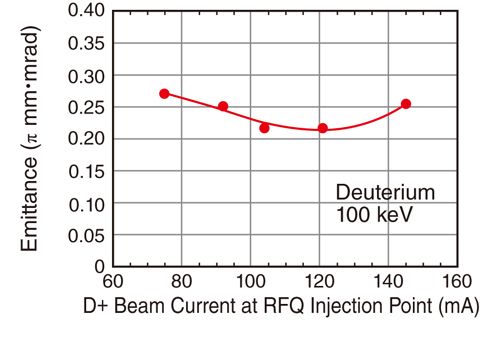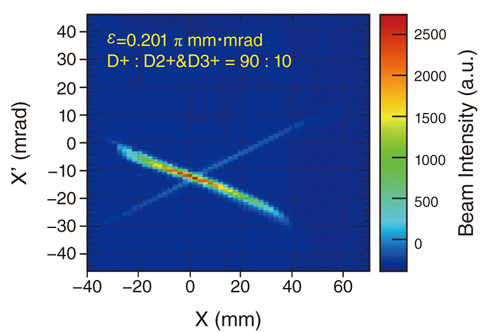
Fig.9-17 Overview of the IFMIF/EVEDA prototype accelerator

Fig.9-18 Input RF power vs beam current

Fig.9-19 Beam current vs emittance at the RFQ injection point

Fig.9-20 Phase-space distribution of extracted beam-ion species
In the development of the DEMO reactor aimed at demonstrating fusion energy as a viable power source, it is a critical issue to understand the damage to the future reactor structural material owing to fast neutrons. It is essential that these reactor materials are evaluated under equivalent spectrum-neutron fluxes to those expected in a fusion reactor. Since 2007, the Engineering Validation and Engineering Design Activities (EVEDA) phase of the International Fusion Materials Irradiation Facility (IFMIF) established under the Broader Approach (BA) activities has been ongoing. A 40-MeV deuterium linear accelerator, the core component in the IFMIF, is characterized by its large current (two 125-mA accelerators) and continuous-wave (CW) output. We are installing and testing a prototype accelerator for engineering validation of the IFMIF accelerator at the Rokkasho site in a stepwise manner, as shown in Fig.9-17, with three main accelerating stages: an injector (100 keV), a radio frequency quadrupole (RFQ: 5 MeV), and a superconductive RF linac (SRF: 9 MeV).
At the injector, due to the high beam current (140 mA or more) with the lowest energy in this accelerator, the strong and nonlinear space charge effect tends to defocus the beam and increase the emittance (the figure of merit to express the beam spread, defined as the beam volume in phase space). It potentially causes undesired beam losses that might result in excessive activation and/or damage of accelerator equipments. Therefore, controlling both the space charge effect and the emittance (<0.25 π mm·mrad is specified as the nominal performance at the entrance of the RFQ) is the mission of the injector-beam-acceleration test.
Since impurity gas deposition on the ion source surface changes the plasma state, we have promoted the degassing by adjusted the deuterium gas flow rate, RF power, and microwave matching condition. And by optimizing parameters such as the magnetic field distribution (along the ion source chamber and the beam extraction system), we have established a stable beam operation condition to suppress discharge between electrodes and plasma instability, with satisfying the target performance.
By beam transport adjustment, as shown in Fig.9-18, we achieved the targeted 140 mA D+ current in the total beam current. As shown in Fig.9-19, we reached an emittance of approximately 0.25 π mm·mrad but only at the low duty cycle. As shown in Fig.9-20, we can calculate the beam-ion fraction based on each ion’s area in the phase space. We achieved a D+ fraction of 90%, thereby meeting requirements.
The neutron source based on a high current deuterium accelerator that is realized by this project is a promising technology for providing not only high fast-neutron flux but also high facility availability and reliability for widespread applications. We will conduct the commissioning of the downstream parts of the accelerator and continue engineering-validation activitiy for the IFMIF.